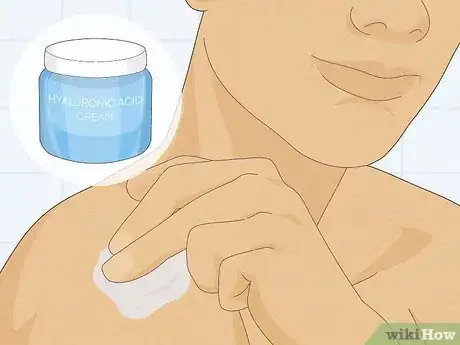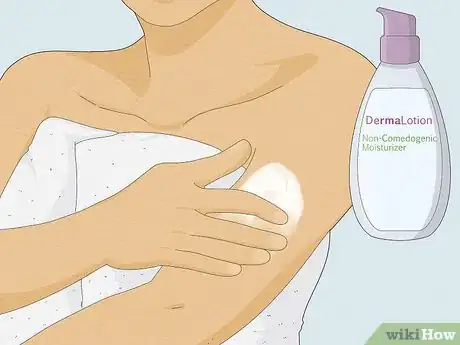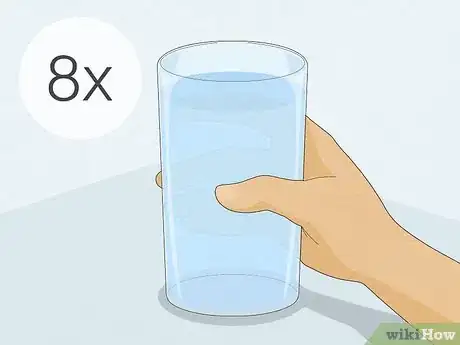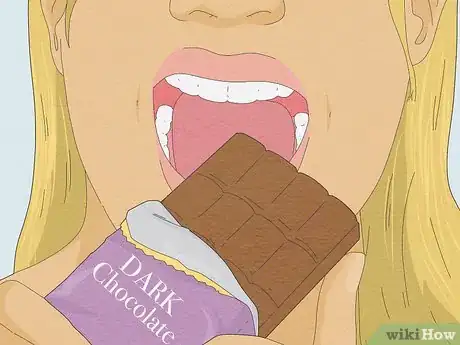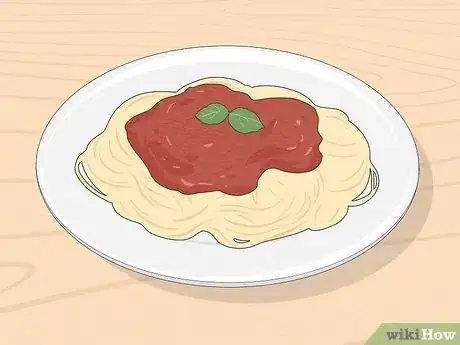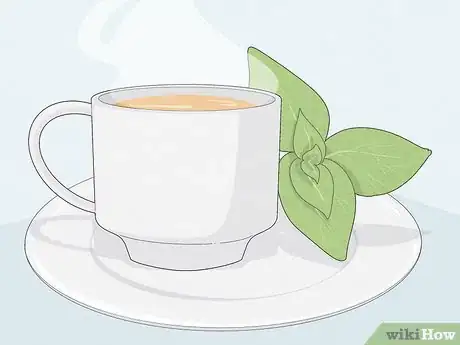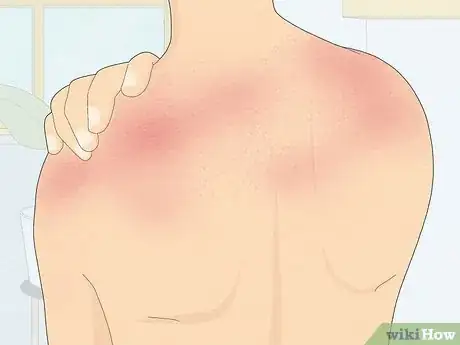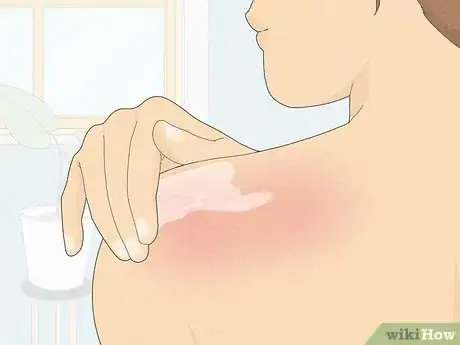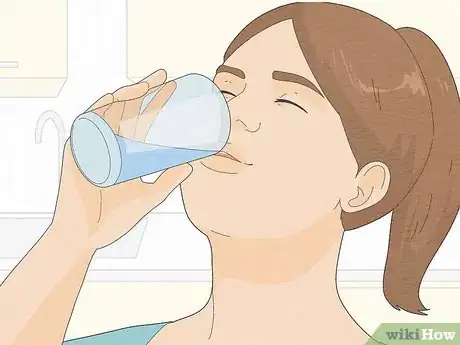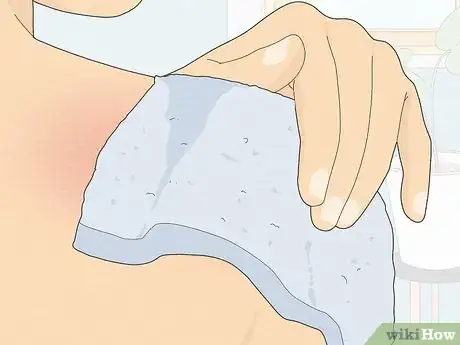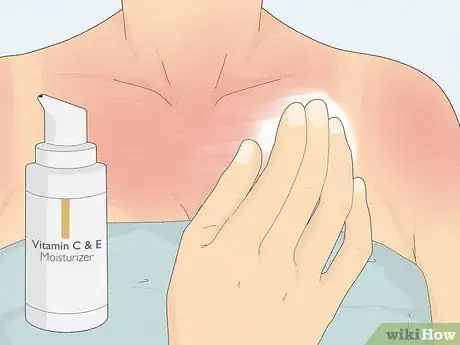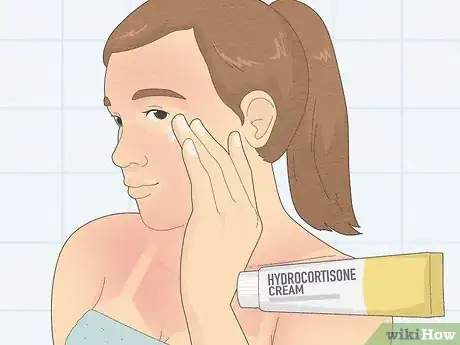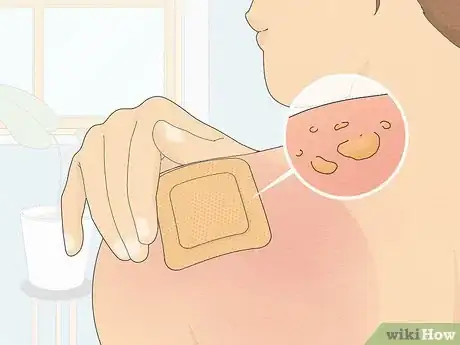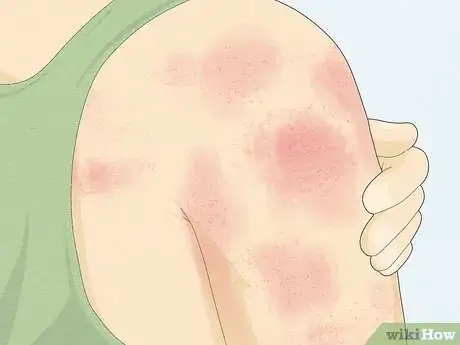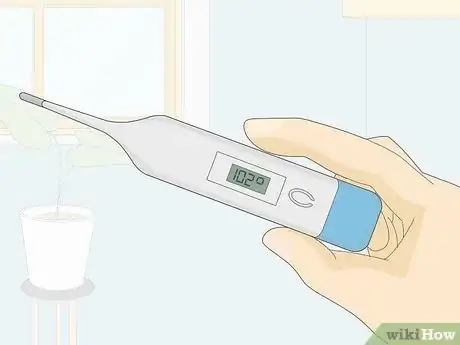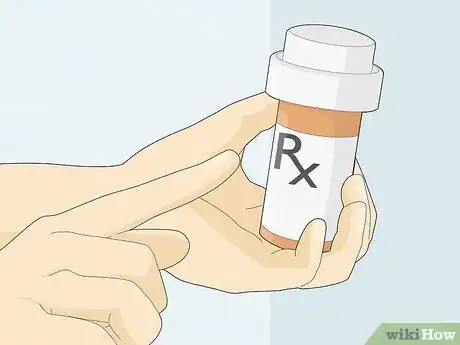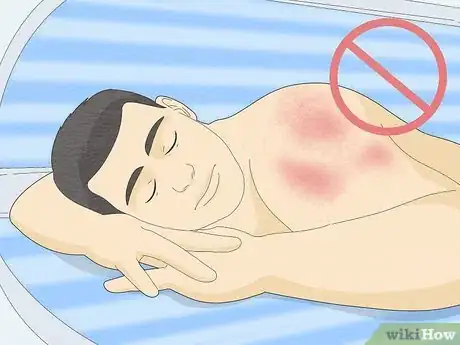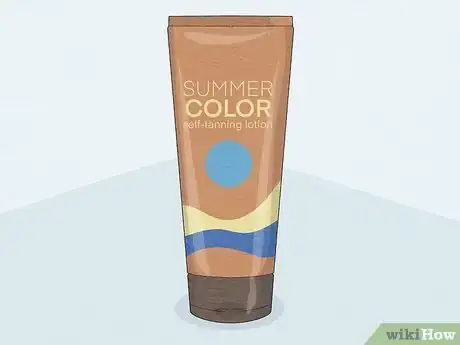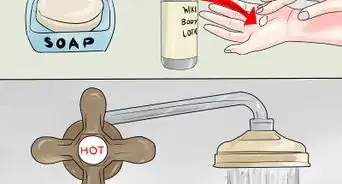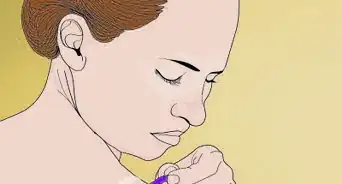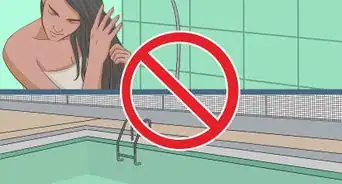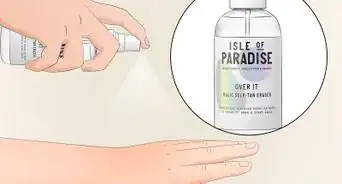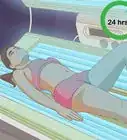This article was co-authored by Margareth Pierre-Louis, MD. Dr. Margareth Pierre-Louis is a board certified Dermatologist and Dermatopathologist, Physician Entrepreneur, and the Founder of Twin Cities Dermatology Center and Equation Skin Care in Minneapolis, Minnesota. Twin Cities Dermatology Center is a comprehensive dermatology clinic treating patients of all ages through clinical dermatology, cosmetic dermatology, and telemedicine. Equation Skin Care was created to provide the best in evidence-based, natural skin care products. Dr. Pierre-Louis earned a BS in Biology and an MBA from Duke University, an MD from the University of North Carolina at Chapel Hill, completed a residency in dermatology at the University of Minnesota, and completed a dermatopathology fellowship at Washington University in St Louis. Dr. Pierre-Louis is board certified in dermatology, cutaneous surgery, and dermatopathology by the American Boards of Dermatology and Pathology.
There are 26 references cited in this article, which can be found at the bottom of the page.
This article has been viewed 257,624 times.
Tanning can elevate your mood, produce vitamin D, and give you the healthy-looking glow you desire; however, doctors recommend avoiding tanning because it causes early aging of the skin and increases the risk of cancer.[1] If you are going to tan, then you can help to make your tan last and keep your skin as healthy as possible by moisturizing and eating the right foods after your tanning session.
Steps
Moisturizing Your Skin
-
1Consider skipping a shower. It’s not because you need to worry about “washing away” your tan. The melanin production stimulated by UVA light won’t be stopped by a shower. Rather, studies show that showering and then applying moisturizer does not hydrate your skin as well as applying moisturizer alone.[2] If you do shower, be sure to:[3]
- Take a cold or warm shower, not a hot one.
- Limit your shower time. Showering too long will remove oils from your skin.
- Avoid soap, or only apply it to the "smelly" places, such as your groin, armpits, and feet. Soap will strip the oil from your skin.
- Pat dry so that some moisture remains on your skin.
-
2Use a product with hyaluronic acid. Hyaluronic acid is a naturally produced chemical that helps to bind and retain water molecules at the skin.[4] Cosmetics containing hyaluronic acid have been shown to improve skin hydration and elasticity.[5] Rub a cream with the compound into your skin before applying moisturizer. If you shower, apply the cream immediately afterwards.Advertisement
-
3Apply moisturizer. Moisturizers help to replace the thin layer of lipids that protects your skin from water loss. Any moisturizer will do, but consider using one with liposomes containing vitamin A for skin health. If you do shower, apply moisturizer immediately afterward.[6]
- Use a non-comedogenic (won’t clog pores) moisturizer if you are prone to breakouts.
Eating to Keep Your Skin Healthy
-
1Hydrate. Skin is made up of cells, and all cells need water. If your skin doesn’t get enough, it will be dry, tight, and flaky. Indeed, one of the main reasons skin ages is that it loses its ability to retain moisture.[7] Drinking at least eight 8-oz glasses of water a day typically ensures that your skin is getting enough water, but because tanning can dehydrate you, you’ll want to drink even more water on days when you tan.[8]
-
2Eat dark chocolate. Cocoa both hydrates your skin and contains flavonols, a powerful type of antioxidant. Antioxidants limit the damage from free radicals that form when the skin is exposed to ultraviolet light.[9]
-
3Consume fruits high in polyphenols. Grapes, apples, pears, cherries, and berries all contain high levels of polyphenols, which have both antioxidant and anti-carcinogenic properties that help them protect your skin from the UV radiation of tanning beds.[10]
-
4Drink pomegranate juice or eat a pomegranate. Pomegranates contain flavonoids that have been shown to have a wide variety of health effects, including acting as an antioxidant that protects skin and helping to prevent cancer.[11]
-
5Cook pasta with tomato sauce or order pizza. Tomatoes contain lycopene, a chemical that has been shown to help protect skin from ultraviolet radiation damage.[12] Tomato paste contains the most, meaning tomato sauces or even pizza can be a rich source.
-
6
-
7Brew some green tea. It contains polyphenols with antioxidant and anti-carcinogenic properties, thus helping to protect your skin from the damage caused by UV light.[15]
Dealing with a Burn
-
1Know that you can burn from tanning too long. Tanning beds emit UVA radiation, just like the sun, and if you stay in them too long you can get burned. The fairer your skin, the less time it will take to burn.
-
2Treat the burn as soon as you notice it. The faster you start treatment, the less damage the burn will do. If your skin feels tingly or itchy, or if it is pink or reddish, you should start treating it right away.[16]
-
3
-
4Put a cold damp towel on your skin or take a cold shower or bath. Do this for 10 or 15 minutes several times a day to take the heat out of your skin and offer relief. If taking a bath or shower, pat yourself dry and leave some water on your skin. Apply moisturizer immediately.[18]
-
5Use moisturizer frequently. Moisturizers with aloe vera are particularly soothing for burned skin,[19] and you may also want to consider products with Vitamin C and E, which may help to limit the damage to your skin.[20] Do not use moisturizers that contain petroleum, which will trap the heat in your skin. Also avoid benzocaine and lidocaine, which can irritate your skin. Do not apply moisturizers to blistering skin.
-
6Apply hydrocortisone cream to particularly uncomfortable areas. You can buy hydrocortisone over-the-counter, and it will help to ease painful burning or itching. Do not apply hydrocortisone to blistering skin.
-
7Take an over-the-counter anti-inflammatory. Ibuprofen (Advil, Motrin) and naproxen (Aleve, Naprosyn) will both reduce pain and swelling, helping to prevent long-term damage to the skin.[21] Adults may also use aspirin, but never give it to children, as it can cause sudden acute brain and liver damage.[22]
-
8Leave blisters alone or cover them with dry bandages. Blisters indicate that you have a second degree burn. Do not put moisturizer on them or pop them, as this will make your sunburn worse.[23] Leave them alone until they heal, or consider covering them with a dry bandage to prevent chafing against your clothing.
-
9Protect yourself when you go outside. The last thing you want to do is to expose your burned skin to more sun. Keep your time outside to a minimum, and when you do go out, cover all burned areas with clothes made of tightly-woven fabric (when you hold them up to a bright light, no light should shine through). If you have a burn on your face, apply a moisturizer that doubles as sunscreen.[24]
Treating Tanning Bed Rash
-
1Know the causes of tanning bed rash. Your skin may become itchy or develop bumps after using a tanning bed for a variety of reasons:[25]
- Your skin has become overheated from the tanning bed.
- You are suffering from polymorphous light eruption, which causes red bumps to appear on the skin after exposure to UV light.[26]
- You are having a reaction to the products used to clean the tanning bed.
- You may be sensitive to the “tan-accelerating” lotion you use while tanning.
- You may be taking a medication (such as birth control, acne medication, or even Advil) that makes your skin more sensitive to UV light.
- You may have a skin infection from a poorly cleaned bed.
-
2
-
3Consult with your doctor about any medications you are taking. You will want to be sure that the drugs you are taking are not making your skin more sensitive to light before returning to the tanning salon.[29]
-
4Stop tanning and see if the rash goes away. If it does not, you should see a doctor. If it does, you can return to the tanning salon and try to determine and eliminate the cause of the rash.[30]
- Apply a small, diluted amount of the cleaner used by the tanning salon to a tiny patch of your skin to see if a rash forms.
- Next, try tanning without the tan-accelerating lotion to see if it was the cause.
- Finally, try tanning for shorter amounts of time, which should eliminate the possibility of heat rash.
-
5Consider other tanning methods if the rash persists. If you continue to develop rashes after tanning, you may be experiencing polymorphous light eruption or might even have developed a UV allergy.[31] Talk to your doctor, and be sure to wear sunscreen when outdoors.[32] Discontinue the use of tanning beds and consider using tanning lotions instead if you want a bronzed look.
Expert Q&A
Did you know you can get expert answers for this article?
Unlock expert answers by supporting wikiHow
-
QuestionHow often should you reapply sunscreen?
 Margareth Pierre-Louis, MDDr. Margareth Pierre-Louis is a board certified Dermatologist and Dermatopathologist, Physician Entrepreneur, and the Founder of Twin Cities Dermatology Center and Equation Skin Care in Minneapolis, Minnesota. Twin Cities Dermatology Center is a comprehensive dermatology clinic treating patients of all ages through clinical dermatology, cosmetic dermatology, and telemedicine. Equation Skin Care was created to provide the best in evidence-based, natural skin care products. Dr. Pierre-Louis earned a BS in Biology and an MBA from Duke University, an MD from the University of North Carolina at Chapel Hill, completed a residency in dermatology at the University of Minnesota, and completed a dermatopathology fellowship at Washington University in St Louis. Dr. Pierre-Louis is board certified in dermatology, cutaneous surgery, and dermatopathology by the American Boards of Dermatology and Pathology.
Margareth Pierre-Louis, MDDr. Margareth Pierre-Louis is a board certified Dermatologist and Dermatopathologist, Physician Entrepreneur, and the Founder of Twin Cities Dermatology Center and Equation Skin Care in Minneapolis, Minnesota. Twin Cities Dermatology Center is a comprehensive dermatology clinic treating patients of all ages through clinical dermatology, cosmetic dermatology, and telemedicine. Equation Skin Care was created to provide the best in evidence-based, natural skin care products. Dr. Pierre-Louis earned a BS in Biology and an MBA from Duke University, an MD from the University of North Carolina at Chapel Hill, completed a residency in dermatology at the University of Minnesota, and completed a dermatopathology fellowship at Washington University in St Louis. Dr. Pierre-Louis is board certified in dermatology, cutaneous surgery, and dermatopathology by the American Boards of Dermatology and Pathology.
Board Certified Dermatologist
Warning
References
- ↑ https://www.nia.nih.gov/health/publication/skin-care-and-aging#healthy
- ↑ http://www.ncbi.nlm.nih.gov/pmc/articles/PMC2762386/
- ↑ http://www.mayoclinic.org/healthy-lifestyle/adult-health/in-depth/skin-care/art-20048237?pg=2
- ↑ http://www.ncbi.nlm.nih.gov/pmc/articles/PMC3583886/
- ↑ http://www.ncbi.nlm.nih.gov/pubmed/22052267
- ↑ Margareth Pierre-Louis, MD. Board Certified Dermatologist. Expert Interview. 15 May 2020.
- ↑ http://www.ncbi.nlm.nih.gov/pmc/articles/PMC3583886/
- ↑ http://www.uwhealth.org/madison-plastic-surgery/the-benefits-of-drinking-water-for-your-skin/26334
- ↑ http://www.ncbi.nlm.nih.gov/pmc/articles/PMC4145303/
- ↑ http://www.ncbi.nlm.nih.gov/pmc/articles/PMC2835915/
- ↑ http://www.ncbi.nlm.nih.gov/pmc/articles/PMC4007340/
- ↑ http://www.ncbi.nlm.nih.gov/pubmed/20854436
- ↑ http://www.fitnessmagazine.com/recipes/healthy-eating/superfoods/best-foods-for-good-skin/?page=6
- ↑ https://ods.od.nih.gov/factsheets/vitaminE-consumer/
- ↑ http://www.ncbi.nlm.nih.gov/pubmed/10926734
- ↑ http://www.skincancer.org/prevention/sunburn/five-ways-to-treat-a-sunburn
- ↑ https://www.aad.org/dermatology-a-to-z/for-kids/about-skin/skin-cancer/treating-sunburn
- ↑ https://www.aad.org/dermatology-a-to-z/for-kids/about-skin/skin-cancer/treating-sunburn
- ↑ https://www.aad.org/dermatology-a-to-z/for-kids/about-skin/skin-cancer/treating-sunburn
- ↑ http://www.skincancer.org/prevention/sunburn/five-ways-to-treat-a-sunburn
- ↑ http://www.skincancer.org/prevention/sunburn/five-ways-to-treat-a-sunburn
- ↑ http://www.nlm.nih.gov/medlineplus/ency/article/002123.htm
- ↑ https://www.aad.org/dermatology-a-to-z/for-kids/about-skin/skin-cancer/treating-sunburn
- ↑ Margareth Pierre-Louis, MD. Board Certified Dermatologist. Expert Interview. 15 May 2020.
- ↑ http://kidshealth.org/teen/your_body/skin_stuff/tanning_itch.html
- ↑ http://www.skincancer.org/skin-cancer-information/ask-the-experts/could-i-be-allergic-to-sunlight
- ↑ http://kidshealth.org/teen/your_body/skin_stuff/tanning_itch.html
- ↑ http://www.totalbeauty.com/content/gallery/tanning-salon-secrets/p91002/page9
- ↑ http://www.skincancer.org/skin-cancer-information/ask-the-experts/could-i-be-allergic-to-sunlight
- ↑ http://kidshealth.org/teen/your_body/skin_stuff/tanning_itch.html
- ↑ http://www.skincancer.org/skin-cancer-information/ask-the-experts/could-i-be-allergic-to-sunlight
- ↑ Margareth Pierre-Louis, MD. Board Certified Dermatologist. Expert Interview. 15 May 2020.
- ↑ http://www.nlm.nih.gov/medlineplus/ency/article/003227.htm
- ↑ http://www.nlm.nih.gov/medlineplus/magazine/issues/summer13/articles/summer13pg8-9.html
About This Article
To take care of your skin after using a tanning bed, apply a generous amount of moisturizer to your skin to protect it from water loss. You can use any moisturizer, but one with liposomes containing vitamin A are best for the health of your skin. In addition to moisturizer, apply a cream that contains hyaluronic acid to help bind and retain water molecules at the skin. Avoid showering if you can, but if you do shower, use cold or lukewarm water, and avoid using soap, which can dry out your skin. In order to keep your skin hydrated, you need to keep your body hydrated. Be sure to drink at least 8 glasses of water a day. For tips about how to protect yourself when you go outside after using a tanning bed, keep reading!

